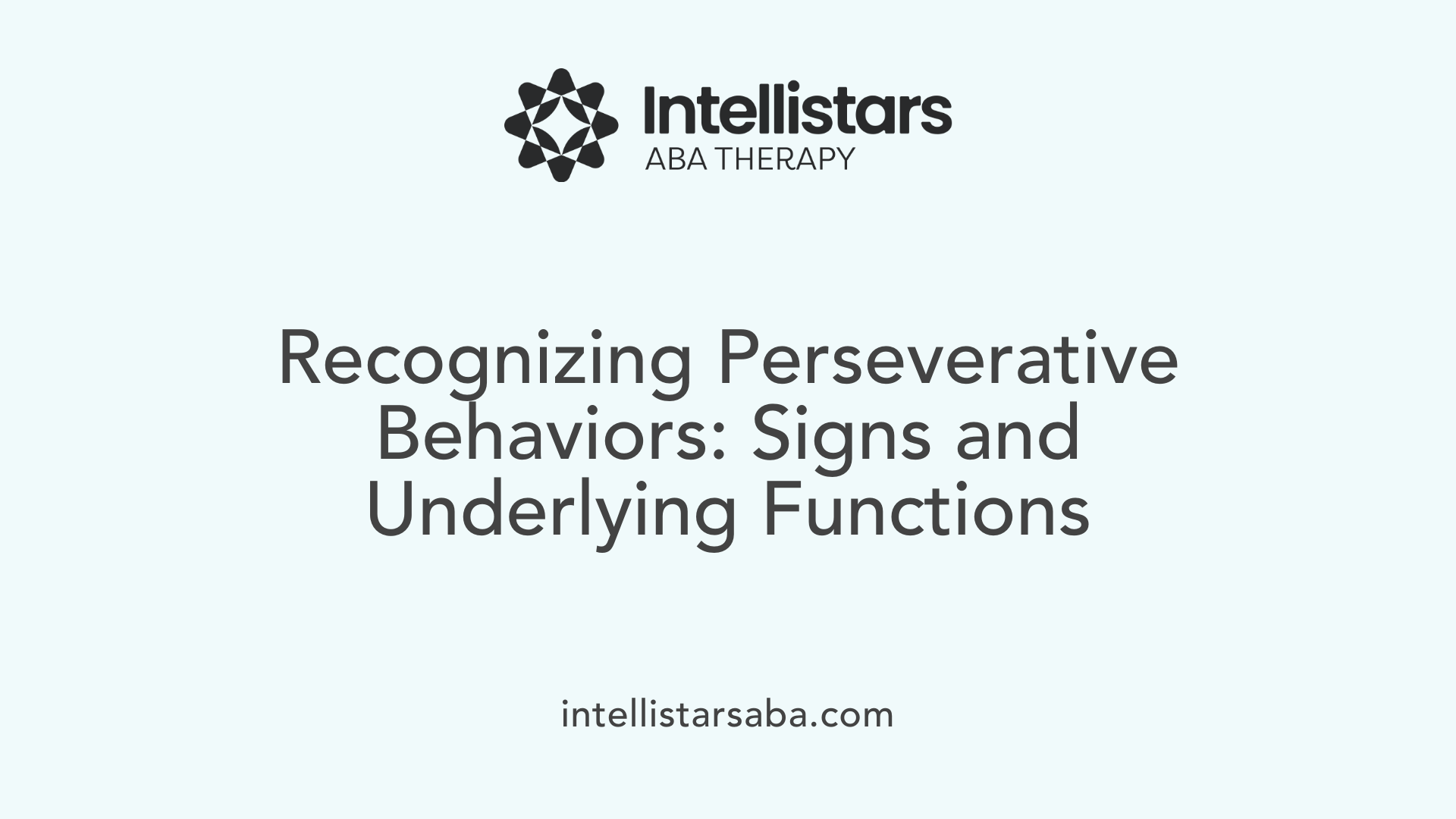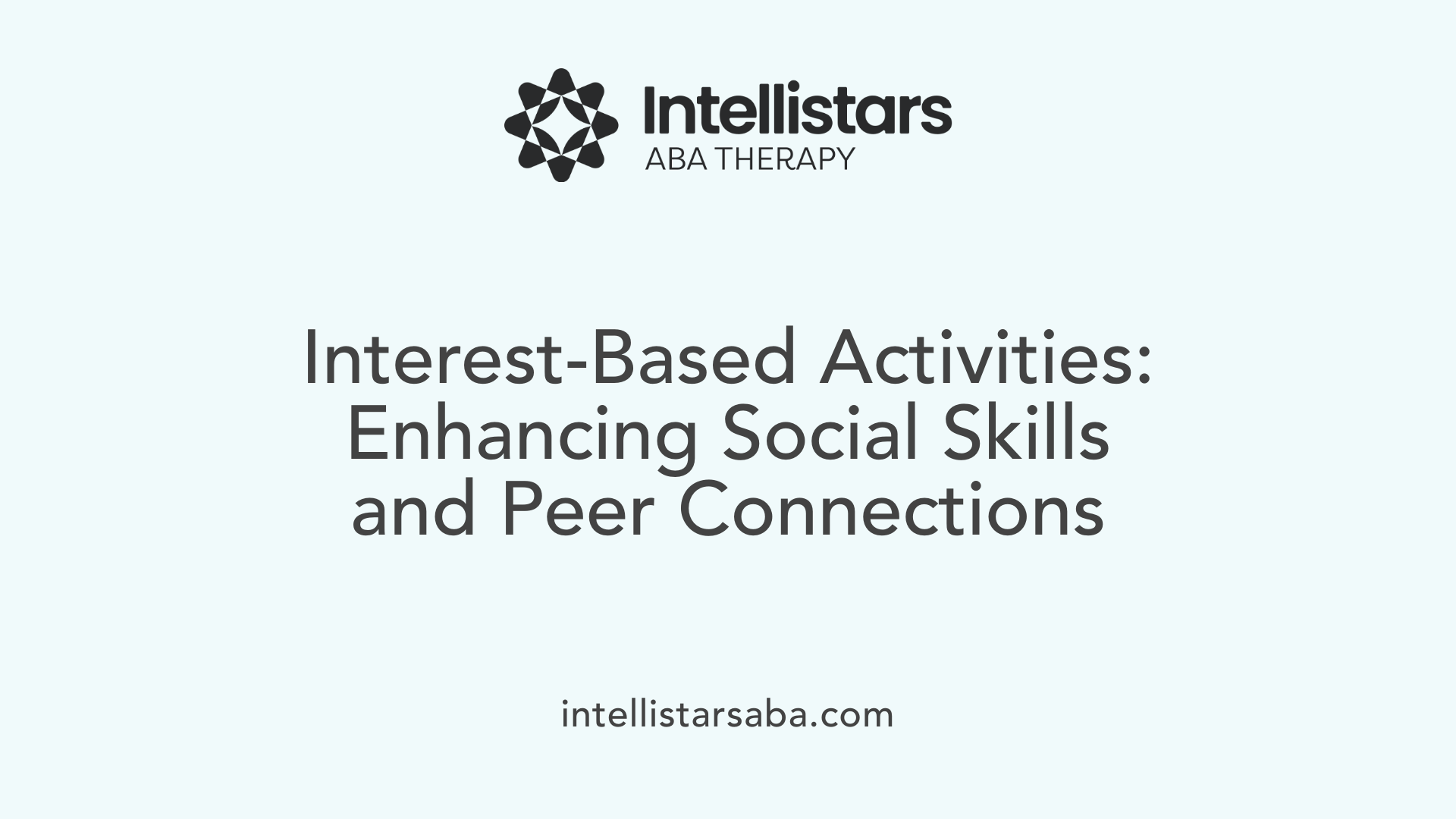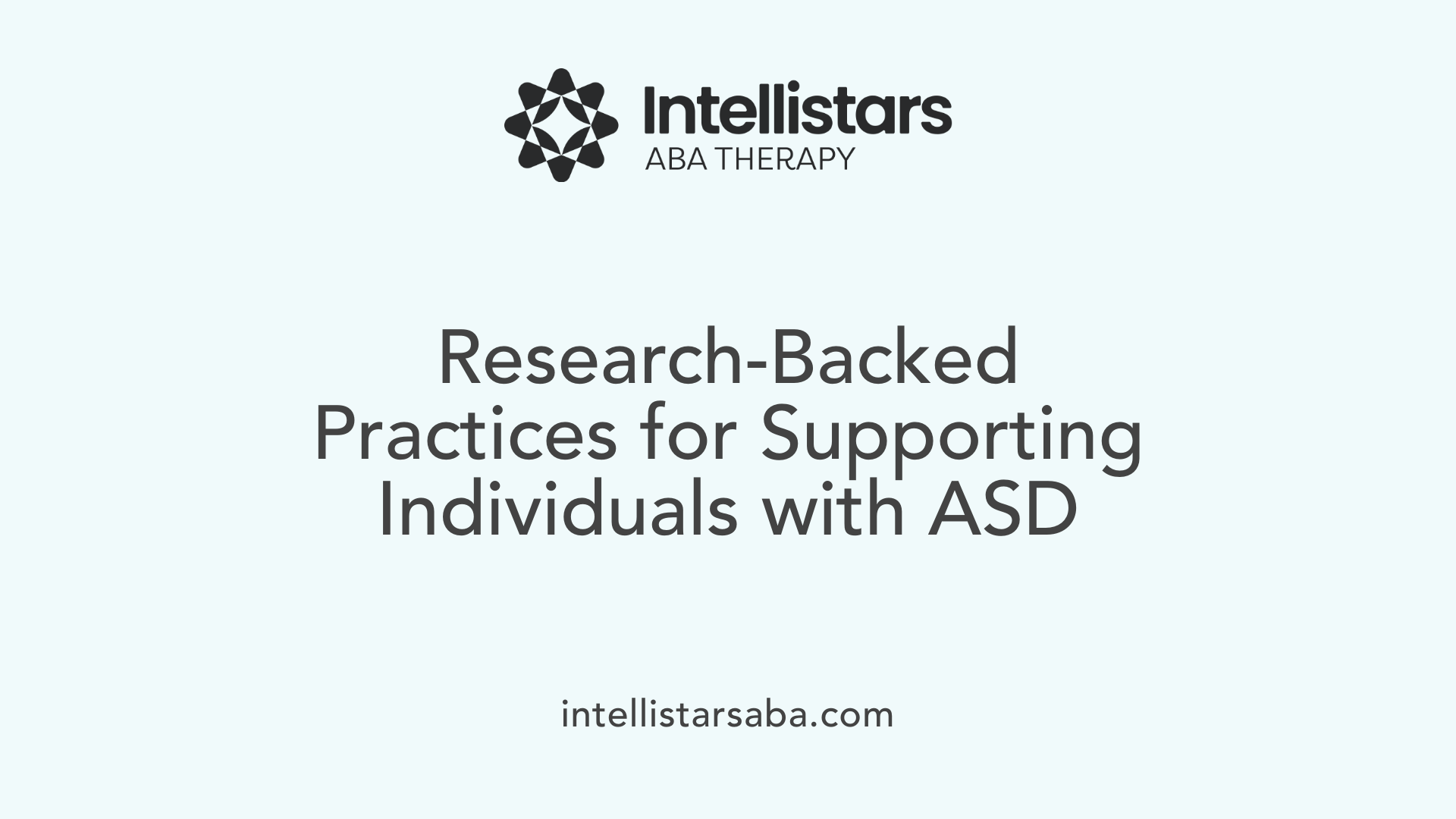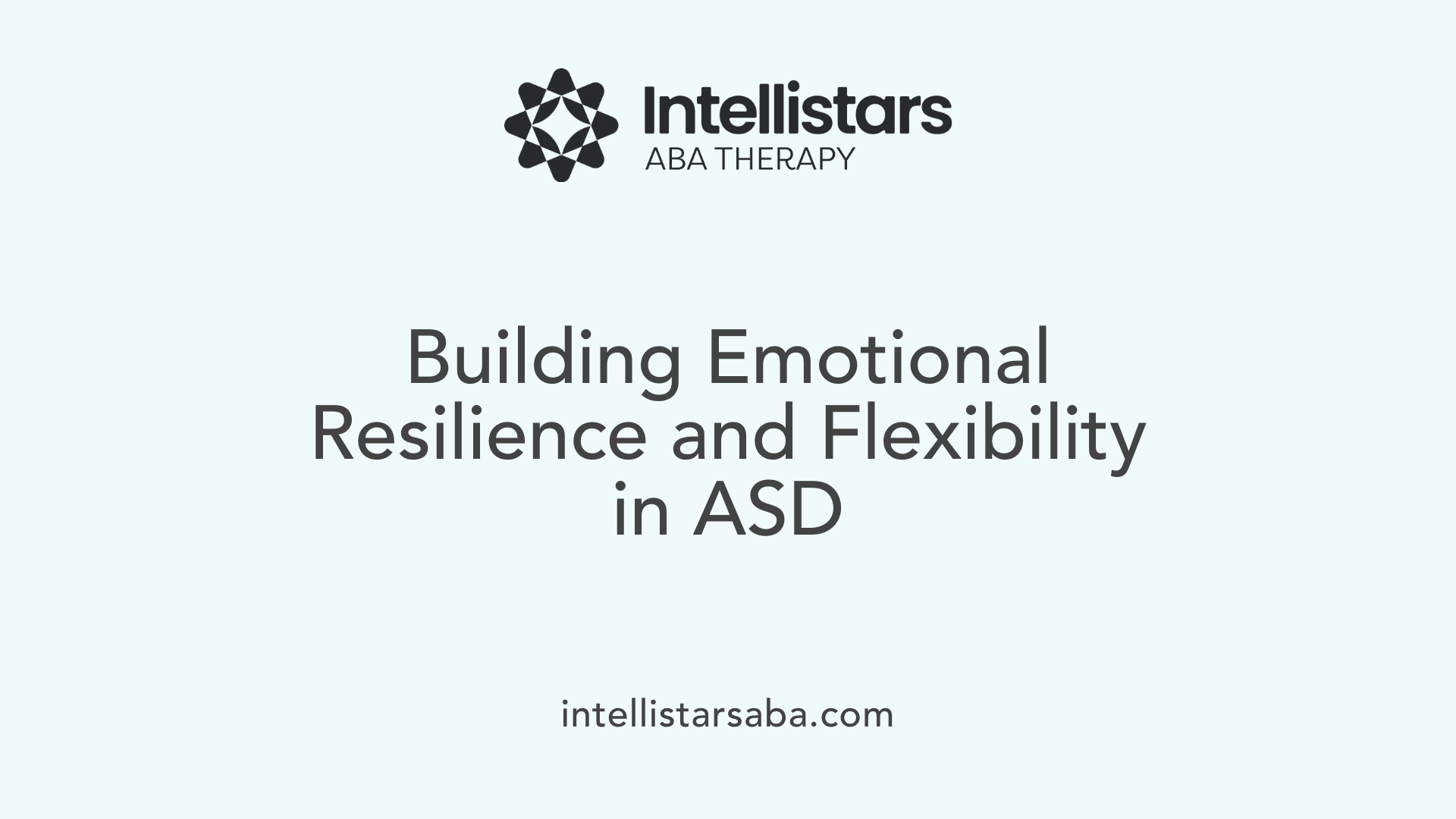Understanding and Addressing Perseverative Interests in Autism Spectrum Disorder
Perseverative interests are a hallmark characteristic of individuals with autism spectrum disorder (ASD). These intense, focused fixations on specific topics, objects, or activities often manifest as repetitive engagement and difficulty shifting attention. When unmanaged, they can impact social interactions and daily functioning. This article explores evidence-based ABA techniques to effectively address perseverative interests, enhance social skills, and promote flexible thinking, supported by recent research and practical intervention strategies.
Defining Perseverative Interests in ASD

What are perseverative interests in individuals with autism spectrum disorder (ASD)?
Perseverative interests in individuals with autism spectrum disorder (ASD) are characterized by intense, focused fixations on specific topics, objects, or activities. These interests often manifest as repeated engagement, asking questions, or conversations centered on the same subject, with the individual showing difficulty shifting attention to new topics.
These fixations are driven by various factors, including anxiety, sensory sensitivities, and neurological differences that influence how the brain develops and functions. Such interests can lead to behaviors that persist beyond socially or contextually appropriate situations, sometimes becoming rigid or obsessive.
Supporting individuals with perseverative interests involves several strategies. Using flexible thinking, offering structured activities, and addressing emotional or sensory needs help improve social interactions and overall well-being. Incorporating these interests constructively, such as through tailored activities or visual supports, can enhance motivation and reduce stress, leading to more positive social engagement with peers.
Signs and Functions of Perseverative Behaviors

What are signs of perseverative behaviors in individuals with ASD?
Signs of perseverative behaviors in individuals with autism spectrum disorder (ASD) often manifest as repeated questioning, fixating on specific topics or interests, and continuously discussing past events or experiences. These individuals may struggle with shifting their attention from one activity to another or experience difficulty transitioning between routines.
Repetitive actions such as hand-flapping, rocking, or spinning are common motor perseverations. Additionally, they might dwell on particular thoughts or emotions, showing persistent worry about past incidents, or exhibit frustration when routines or interests are changed unexpectedly.
Behaviorally, these behaviors act as coping mechanisms. They often help manage anxiety, sensory overload, or challenges with flexible thinking. Recognizing these signs can assist caregivers and educators in implementing supportive strategies that reduce stress and promote more adaptable behaviors.
What functions does perseveration serve for individuals with ASD?
Perseverative behaviors serve several functions for individuals with autism. Chiefly, they act as a way to cope with feelings of being overwhelmed or anxious. These behaviors provide a sense of comfort and predictability when facing unfamiliar settings, noise, or social pressures.
Furthermore, perseveration can serve as a form of self-regulation or emotional management, helping individuals calm themselves in stressful situations. It also offers an outlet for expressing strong interests or needs, especially when verbal communication is limited or difficult.
Understanding the functions of perseverative behaviors is essential for developing effective interventions. Using approaches that provide alternative ways to cope, communicate, or engage can reduce reliance on these behaviors while supporting emotional well-being and social integration.
ABA Techniques for Addressing Perseveration
 Managing perseverative behaviors in individuals with autism spectrum disorder (ASD) requires a range of behavioral strategies focused on increasing flexibility and reducing fixation on certain topics or actions.
Managing perseverative behaviors in individuals with autism spectrum disorder (ASD) requires a range of behavioral strategies focused on increasing flexibility and reducing fixation on certain topics or actions.
One of the primary techniques involves redirecting the individual to alternate activities or topics. For example, if a child is fixated on a specific interest like trains, gently introducing related but different subjects can help shift focus. It's important to do this in a calm, supportive manner that acknowledges their interests, perhaps by joining in the repetitive activity initially and then gradually guiding them toward new activities.
Creating visual supports and structured routines also plays a vital role. Using visual schedules, checklists, or cues provides predictability and helps the individual understand what to expect, reducing anxiety and resistance to change. Breaking larger tasks into smaller, manageable steps with clear visual prompts allows it to seem less overwhelming, promoting more adaptive responses.
Functional Communication Training (FCT) is another effective approach. It teaches appropriate ways to communicate needs or feelings that might otherwise manifest as perseveration. For example, teaching a child to ask for a break or for assistance with a challenging topic can decrease compulsive repetitions.
Behavioral techniques such as response interruption, redirection, and differential reinforcement are widely used. These methods involve providing positive reinforcement when the individual exhibits flexible behaviors and discouraging perseveration by guiding attention elsewhere.
Combining these strategies with naturalistic teaching during daily activities, integrating interests into learning tasks, using social stories, and employing video tools can make interventions more effective. The goal is to foster understanding of social Norms, develop coping skills, and support emotional regulation.
| Technique | Description | Benefits |
|---|---|---|
| Redirection and flexibility | Gently shifting focus to a different activity or conversation | Promotes adaptable thinking, reduces fixation |
| Visual supports and routines | Utilizing schedules, checklists, and visual cues | Increases predictability, reduces anxiety, encourages independence |
| Functional communication training | Teaching functional ways to express needs or feelings | Decreases maladaptive perseverative behaviors |
| Response interruption and redirection | Interrupts perseverative speech or actions and redirects to new activity | Enhances self-regulation and social responsiveness |
| Embedding interests into tasks | Incorporating special interests into daily activities to motivate and engage | Builds motivation, decreases resistance to change |
Overall, these ABA strategies offer a comprehensive framework to help individuals with ASD become more flexible, socially engaged, and able to adapt to new situations.
Promoting Social Skills Through Interest-Based Activities
 Structured social clubs that revolve around perseverative interests have shown to be effective in fostering positive interactions between adolescents with Autism Spectrum Disorder (ASD) and their typically developing peers.
Structured social clubs that revolve around perseverative interests have shown to be effective in fostering positive interactions between adolescents with Autism Spectrum Disorder (ASD) and their typically developing peers.
These clubs focus on shared interests such as movies, comic books, drawing, or card games, and are designed without disclosing the autism diagnosis to the peer group. This approach helps normalize participation and encourages genuine social engagement.
Research using a repeated measures multiple baseline design indicates that participants exhibit significant increases in social initiation and engagement during these club activities. Before intervention, engagement levels were low, but they rapidly improved once structured activities around personal interests were introduced.
Involving peers as mediators—where they facilitate and participate in activities—supports the development of friendships and allows skills learned within the club to be applied in broader social situations.
Because interests like movies or drawing act as intrinsic motivators, they serve as powerful reinforcers that promote appropriate peer interaction. Recognizing and harnessing individual perseverative interests transforms what could be rigid or problematic behaviors into positive social opportunities.
These strategies contribute to creating a more inclusive social environment, helping adolescents with ASD form meaningful peer relationships. The use of interest-based activities thus provides a natural context for practicing social skills and reducing social withdrawal.
Summary table:
| Approach | Description | Expected Outcome |
|---|---|---|
| Interest-based social clubs | Activities centered on personal perseverative interests | Increased social initiation and engagement |
| Peer-mediated interventions | Involving peers in activities to support social development | Friendship formation and skill generalization |
| Personalized interests | Use of authentic interests to motivate social participation | Enhanced motivation and positive reinforcement |
Targeted use of personalized, interest-based activities offers a promising path toward improving peer interactions and supporting social development in adolescents with ASD.
Research Support and Practical Applications

What practices and interventions supported by research are effective for reducing perseverative behaviors in ASD?
Research in autism intervention strategies emphasizes the importance of behavioral techniques, particularly those rooted in Applied Behavior Analysis (ABA). Effective practices include creating environments that promote flexibility, such as using response interruption, redirection, and response blocking to manage perseverative behaviors.
Structured social activities, like lunchtime clubs focused on individual perseverative interests (e.g., movies, comic books, drawing, card games), have shown promising results. These clubs are designed to engage participants positively by leveraging their interests as reinforcement, which encourages social interaction and initiations.
To enhance social skill development, interventions often involve visual supports like schedules, visual cues, and response systems. Functional analysis helps identify the purpose behind perseverative behaviors, guiding tailored strategies.
Use of peer-mediated interventions
Involving peers as active facilitators can significantly support social learning. Peer-mediated interventions foster friendship development and increase generalization of social skills. Peers can assist by encouraging participation, modeling appropriate behavior, and creating a natural social context where adolescents with ASD can practice communication.
These approaches are complemented by reinforcement strategies and sensory considerations, helping children feel more comfortable and motivated to engage.
Effectiveness of structured social clubs
Research demonstrates that when social clubs are organized around individual interests, they create highly motivating and inclusive environments. Participants with ASD show marked increases in social engagement, initiation of interactions, and the building of peer relationships.
Data collected from experimental designs indicate rapid improvements in engagement levels during intervention phases, especially when clubs are thoughtfully tailored to the interests of each participant.
| Intervention Type | Main Approach | Outcomes | Supporting Elements |
|---|---|---|---|
| Structured Lunchtime Clubs | Engagement around perseverative interests | Increased social participation and initiation | Visual supports, reinforcement, peer involvement |
| Peer-Mediated Social Skills | Peer facilitation and modeling | Development of friendships and social skills | Training peers, naturalistic settings |
| Behavioral Techniques (ABA) | Response interruption, redirection, visual cues | Reduction in perseverative behaviors, increased flexibility | Functional analysis, reinforcement, sensory strategies |
Overall, combining these research-backed practices provides a comprehensive approach to supporting adolescents with ASD, enhancing social competence, and reducing the impact of perseverative behaviors.
Implementing ABA Strategies: Practical Approaches and Resources

What are some practical approaches and resources for implementing ABA strategies to manage perseverative interests?
Effectively managing perseverative interests in individuals with autism spectrum disorder (ASD) involves adopting practical, evidence-based approaches tailored to each individual’s needs. Creating personalized intervention plans is a fundamental step. These plans often include sensory management techniques and strategies to reduce anxiety, which can trigger perseverative behaviors.
Visual supports, such as schedules, checklists, and timers, play a vital role. They help individuals anticipate upcoming changes, providing a sense of predictability that reduces anxiety and compulsive behaviors. For example, visual schedules can outline daily routines, while timers indicate how long a child can engage in a particular activity.
Breaking complex goals into small, manageable steps encourages steady progress. Consistent reinforcement of successful attempts fosters motivation and learning. Naturalistic teaching opportunities—integrating intervention into typical daily routines—can promote the generalization of skills.
Key behavioral strategies include response interruption and redirection, which involve stopping perseverative behaviors and guiding the individual towards more appropriate activities. Functional communication training (FCT) enables the individual to express needs or interests verbally or non-verbally, reducing reliance on perseverative speech.
Collaborating with a multidisciplinary team enhances comprehensive support. Occupational therapists (OTs), speech-language pathologists (SLPs), and behavioral analysts work together to develop and implement effective, individualized interventions.
Additional resources such as video modeling, social stories, and visual cue cards support understanding and acceptance of changes. These tools can help children adapt flexibly and develop more functional social interactions.
| Approach | Description | Benefits |
|---|---|---|
| Sensory Management | Address sensory needs to reduce triggers | Reduces anxiety and perseverative responses |
| Visual Supports | Schedules, timers, checklists | Increases predictability and reduces stress |
| Response Interruption | Temporarily halting perseveration | Helps introduce alternative behaviors |
| Functional Communication Training | Teaching effective communication | Lessens dependency on perseverative speech |
| Multidisciplinary Collaboration | Team-based planning | Ensures comprehensive, individualized support |
Using these approaches and resources creates a supportive environment that encourages flexibility and social engagement for adolescents with ASD.
More Information: Search for "Guidelines for ABA implementation, resources for autism interventions" for detailed strategies, tools, and service providers dedicated to supporting individuals with autism.
Supporting Emotional Well-Being and Flexibility

What are some strategies to help individuals develop flexible thinking and emotional resilience?
Supporting emotional regulation is essential for helping adolescents with autism spectrum disorder (ASD) develop greater flexibility and resilience. One effective approach involves understanding the child's fears and anxieties, then planning behaviors and routines that reduce unpredictability. Teaching coping skills, such as deep breathing or sensory techniques, enables individuals to manage overwhelming emotions.
Celebrating small successes, like successfully transitioning between activities or managing a perseverative thought for a certain period, encourages motivation and confidence. These milestones help build a sense of mastery over their reactions and behaviors.
Fostering flexible thinking can also be achieved through consistent routines combined with gentle encouragement to adapt or try new activities. Using visual supports, social stories, and countdown timers prepares children for upcoming changes, minimizing emotional distress.
Encouraging curiosity by asking questions in a supportive manner promotes problem-solving and cognitive flexibility. For example, instead of insisting on strict routines, caregivers can ask, “What could you do differently?” or “Can you think of other ways to solve this?”
Collaboration with speech-language pathologists, occupational therapists, and mental health professionals plays a crucial role in building these skills. They can guide the use of tailored interventions that enhance self-regulation and emotional resilience.
Over time, these strategies help individuals acquire a greater sense of control and adaptability. This not only diminishes compulsive or perseverative behaviors but also enables them to navigate transitions and social situations more smoothly, promoting overall emotional well-being.
The Broader Context and Future Directions

How has the evolution of diagnostic criteria influenced understanding of perseveration?
Prior to 2013, autism diagnoses distinguished between conditions like Asperger's Syndrome and classic autism. The DSM-5 consolidated these under a single autism spectrum disorder diagnosis, emphasizing a spectrum of behaviors and traits. This change has deepened understanding of perseveration, recognizing it as a common and varied feature across the spectrum rather than a separate diagnosis. The broader criteria have fostered more inclusive and nuanced approaches to identifying and addressing repetitive behaviors.
What are current research gaps related to perseveration and repetitive behaviors?
While advancements have improved our understanding, gaps remain. Most existing research focuses on stereotypies—lower-order, repetitive motor behaviors. There is less emphasis on higher-order behaviors such as insistence on sameness and circumscribed interests, which are often more rigid and impactful socially. More targeted studies are needed to develop interventions that effectively address these complex, persistent behaviors and incorporate individualized strategies based on function.
Why is understanding perseveration important for designing effective interventions?
Recognizing the functions of perseverative behaviors—such as self-soothing, gaining attention, or expressing interests—is essential. This awareness guides practitioners to create tailored interventions that promote flexibility and social engagement. Using visual supports, scheduling, and substitute activities helps manage perseveration productively. Incorporating interests into social activities, like structured clubs around specific interests, encourages positive social interactions without the need to eradicate these behaviors. Personalized, function-based strategies are central to supporting emotional regulation and social development in individuals with ASD.
| Aspect | Focus Areas | Emerging Strategies | Importance |
|---|---|---|---|
| Diagnostic Evolution | Broader autism spectrum | Recognition of varied perseveration types | More inclusive understanding |
| Research Gaps | Higher-order behaviors | Targeted, individualized interventions | Better social and emotional outcomes |
| Intervention Approaches | Behavior management | Visual supports, substitution, peer involvement | Enhanced social skills and flexibility |
Harnessing the Power of ABA for Lasting Change
By applying a multifaceted, evidence-based approach rooted in ABA techniques, caregivers and professionals can effectively manage perseverative interests, turning potential challenges into opportunities for growth. Emphasizing individual needs, promoting emotional regulation, and leveraging these interests as social tools can transform perseverative behaviors from obstacles into avenues for connection and development. Continued research and tailored interventions will further optimize outcomes, fostering greater independence and quality of life for individuals with ASD.
References
- Using Perseverative Interests to Improve Interactions Between ...
- Verbal Perseveration! Verbal Perseveration! | NFXF
- Understanding Perseveration in Autism
- Perseveration: What it is and How to Address It
- How can perseverative thoughts be lessened? - Autism Awareness
- Evidence-Based Behavioral Interventions for Repetitive Behaviors in ...
- Replacement Behavior Tools for Perseverative Behaviors
- The Right Way To Handle Perseverative Behavior In Autism
- How to Define Perseveration in Autism Spectrum Disorder
- Trying to Pull Out of Perseveration Station: Strategies for Reducing ...






